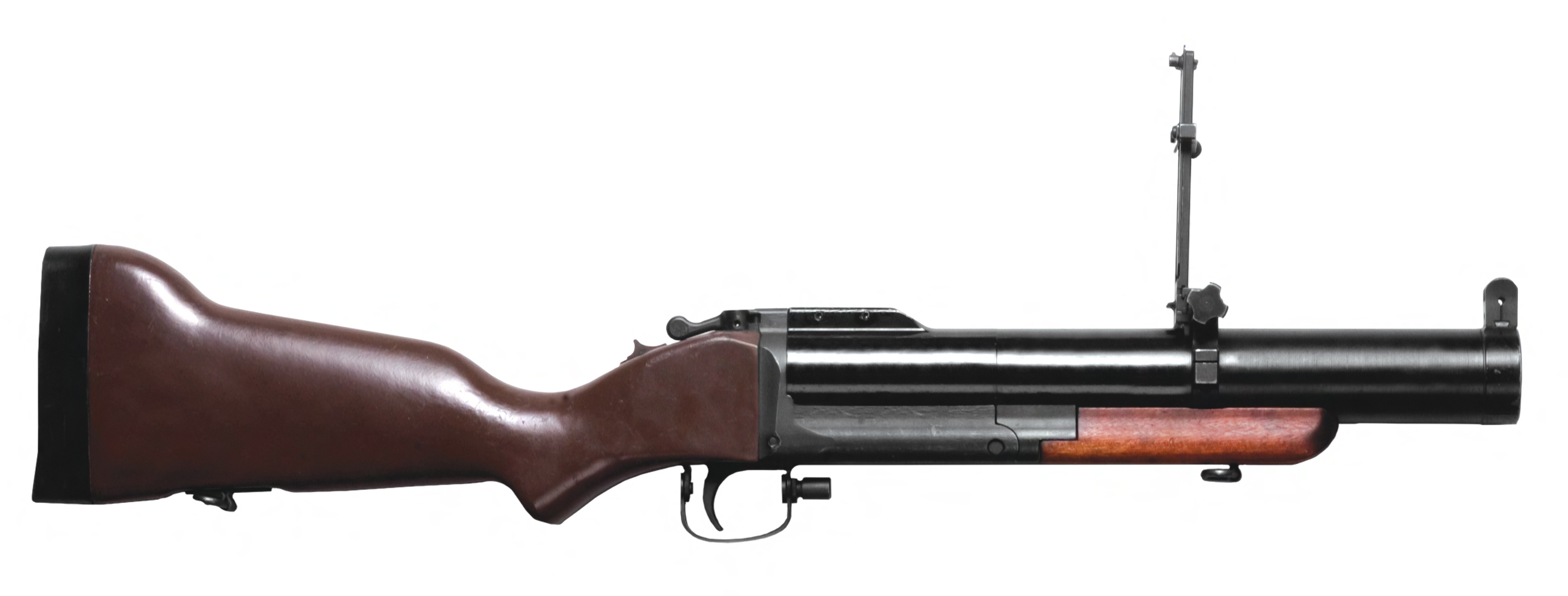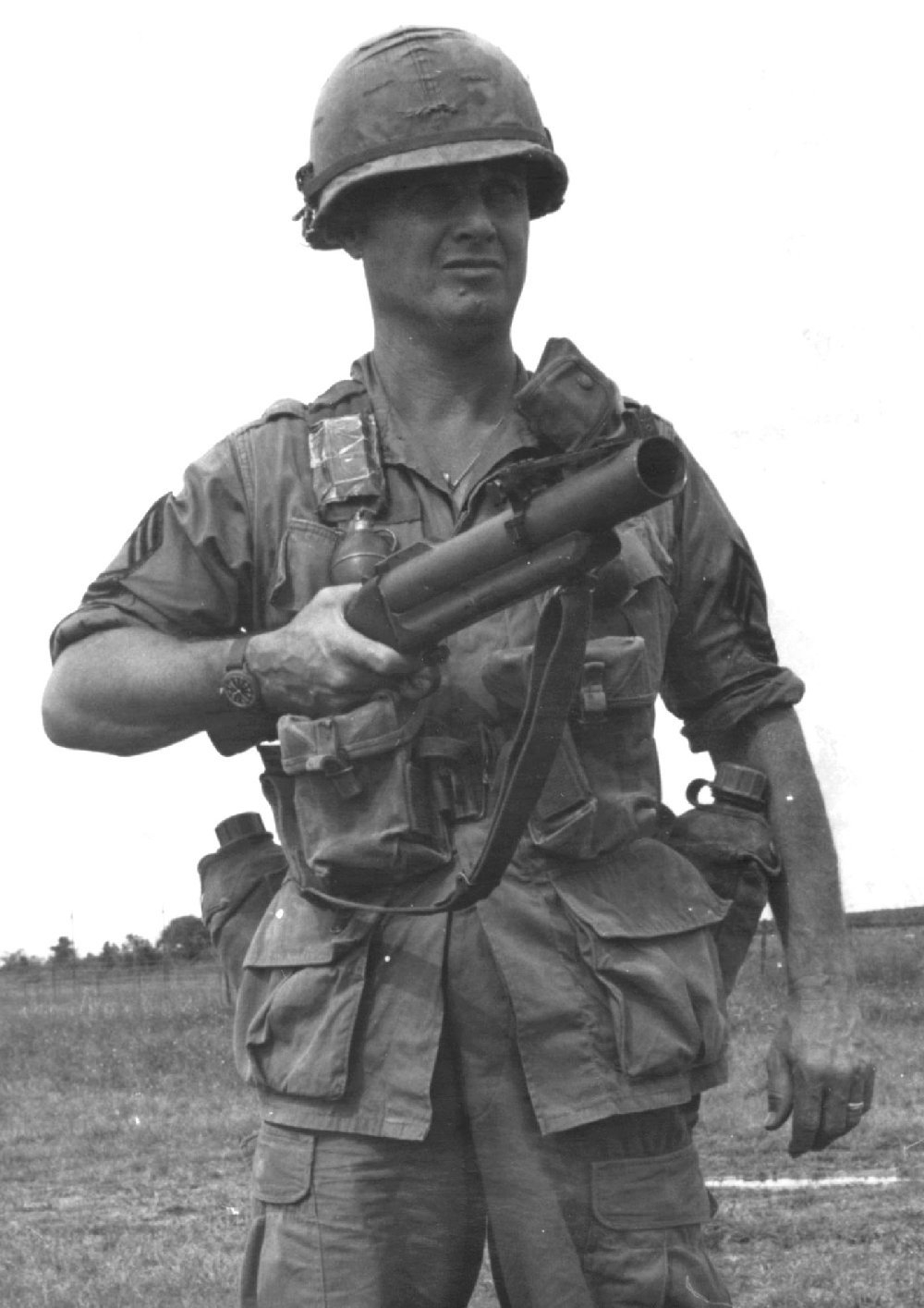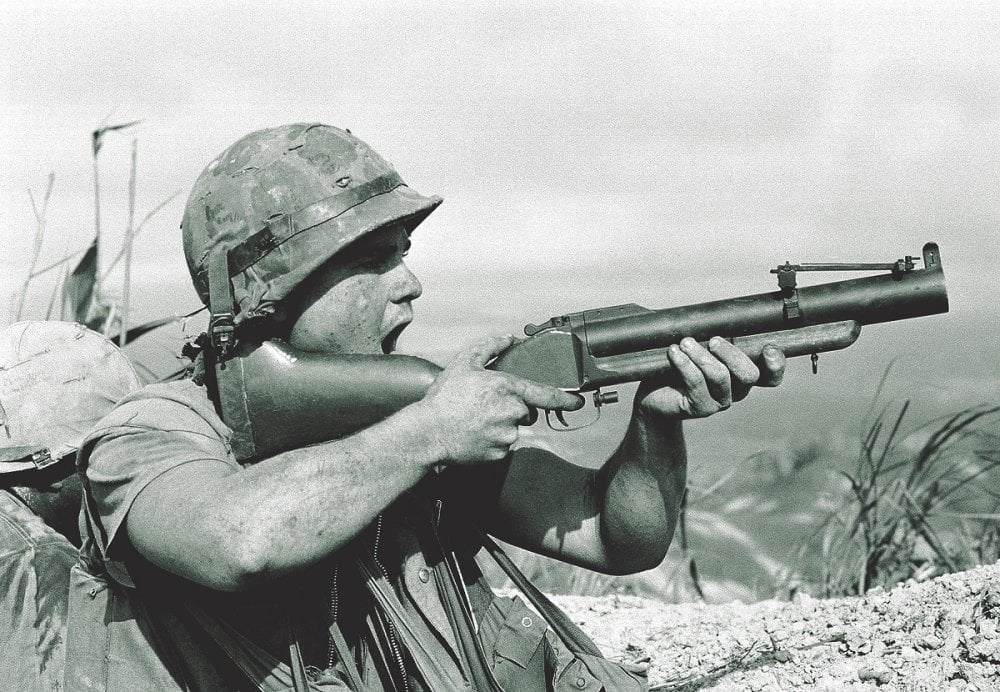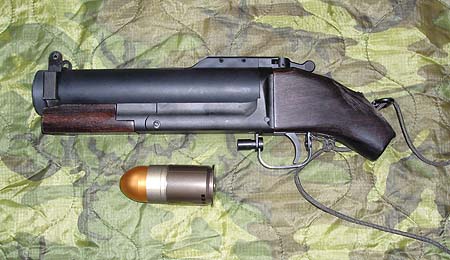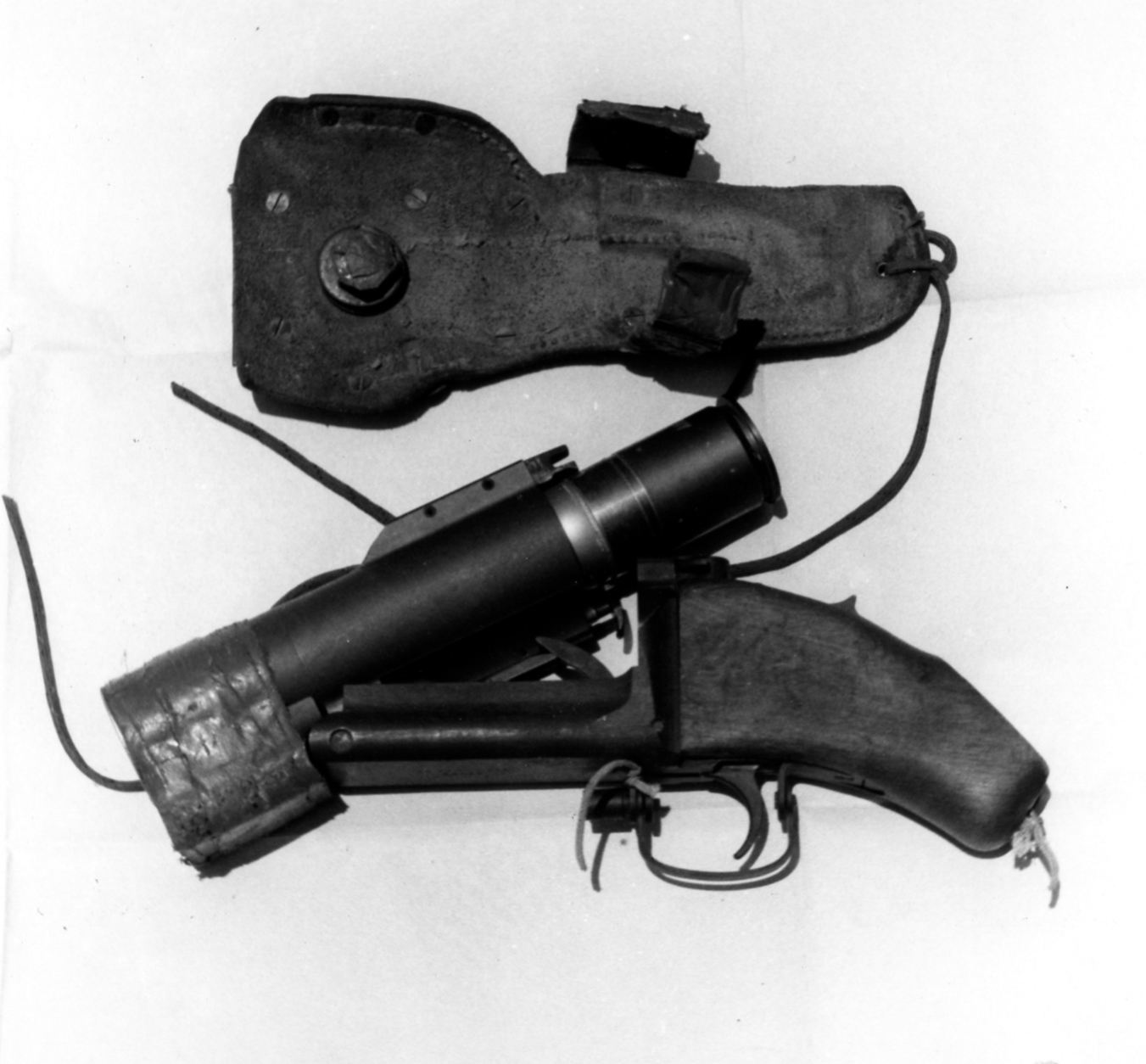M79: Difference between revisions
Skizmophonic (talk | contribs) No edit summary |
Skizmophonic (talk | contribs) No edit summary |
||
| (18 intermediate revisions by the same user not shown) | |||
| Line 1: | Line 1: | ||
[[Category:Weapons]] | |||
[[Category:Weapons of Vietnam]] | |||
{| class="wikitable sortable" style="margin:auto;text-align: center;width:90%" | {| class="wikitable sortable" style="margin:auto;text-align: center;width:90%" | ||
|- | |- | ||
| Line 10: | Line 12: | ||
! [[Damage]]!! Radius | ! [[Damage]]!! Radius | ||
|- | |- | ||
|[[File:Flag_us_new.png|50px]]<br><strong>[[US]]</strong> || [[File:M79.png| | |[[File:Flag_us_new.png|50px]]<br><strong>[[US]]</strong> || [[File:M79.png|480px]]<br><b>[[M79]]</b> || [[File:Weapon m79.svg|480px]] || [[File:Class_Engineer.png|50px]] <b>[[Engineer]]</b><br>|| 1 / 2 || 125 || 200 | ||
|- | |- | ||
|} | |} | ||
| Line 24: | Line 26: | ||
! rolspan=2 | [[Projectile weight]] | ! rolspan=2 | [[Projectile weight]] | ||
! rolspan=2 | [[Weight]] | ! rolspan=2 | [[Weight]] | ||
! rolspan=2 | Reload Speed | |||
|- | |- | ||
|[[M79]]||[[]]||Semi||RPM|| | |[[M79]]||[[Grenade Launcher]]||Semi||12 RPM||3° & 1° [[ADS]]||Unaffected||60 m/s||230g (.5 lbs)||7 kg (15.43 lbs)||3.166 Seconds | ||
|- | |- | ||
|} | |} | ||
{| class="wikitable sortable" style="margin:auto;text-align: center;width:90%" | {| class="wikitable sortable" style="margin:auto;text-align: center;width:90%" | ||
|- | |- | ||
! rowspan=2 | | ! rowspan=2 | Buckshot Damage Base | ||
! rowspan=2 | [[Headshot]] × | |||
! rowspan=2 | [[ | ! rowspan=2 | Chest × | ||
! rowspan=2 | | ! rowspan=2 | Stomach × | ||
! rowspan=2 | | ! rowspan=2 | Leg × | ||
! rowspan=2 | | ! rowspan=2 | Arm × | ||
! rowspan=2 | | ! rowspan=2 | [[Range Modifier]] | ||
! rowspan=2 | [[ | |||
|- | |- | ||
| | |25x6||×2.5 = 62.5||×1.5 = 37.5||×1.25 = 31.25||×0.9 = 22.5||×0.85 = 21.25||0.75 | ||
|- | |- | ||
|} | |} | ||
<hr> | <hr> | ||
The M79 grenade launcher is a single-shot, shoulder-fired, break-action grenade launcher that fires a 40×46mm grenade, which uses what the US Army calls the High-Low Propulsion System to keep recoil forces low, and first appeared during the Vietnam War. Its distinctive report has earned it colorful nicknames, such as "Thumper", "Thump-Gun", "Bloop Tube", "Big Ed", "Elephant Gun", and "Blooper" among American soldiers as well as "Can Cannon" in reference to the grenade size; Australian units referred to it as the "Wombat Gun". | |||
=HISTORY= | =HISTORY= | ||
The M79 was a result of the US Army's Project Niblick, an attempt to increase firepower for the infantryman by having an explosive projectile more accurate with further range than rifle grenades, but more portable than a mortar. Project Niblick created the 40 x 46 mm grenade, but was unable to create a satisfactory launcher for it that could fire more than a single shot. One of the launchers at Springfield Armory was the three-shot "harmonica" T148 (not to be confused with the later, underbarrel [[XM148]]), which did see some limited production and fielding in Vietnam, but problems with the three-round magazine prevented widespread acceptance. The other design was a single-shot break-open, shoulder-fired weapon, the S-3. This was refined into the S-5, which resembled an oversized single-barrel shotgun. Unable to solve the problems with the multi-shot T148 launcher, the Army adopted the S-5 as the XM79. With a new sight, the XM79 was officially adopted as the M79 on December 15, 1960. | |||
In 1961, the first M79 grenade launchers were delivered to the US Army. Owing to its ease of use, reliability, and firepower, the M79 became popular among American soldiers, who dubbed it "the platoon leader's artillery". Some soldiers would cut down the stock and barrel to make the M79 even more portable. | |||
The M79 saw combat in the Vietnam War beginning in the early days, when M79 Grenadiers assigned to major Army divisions first arrived to see combat in Vietnam in 1965, including the 1st Cavalry Division, the 1st Infantry Division, the 101st Airborne Division, and the 173rd Airborne Brigade. M79s were assigned to the specialist 4 grenadier in both 4-5-man fire teams organic to an Army rifle squad headed by a squad leader. The Marines assigned one grenadier to their three-fireteam 14-man rifle squad. | |||
However, its single-shot nature was a serious drawback. Reloading after every shot meant a slow rate of fire and an inability to keep up a constant volume of fire during a firefight. This led the Navy to develop the [[China Lake Grenade Launcher]], which was produced for deployed SEAL Teams. For close-in situations, the minimum arming range (the round travels 30 meters to arm itself) and the blast radius meant a grenadier had to use his .45 ACP (11.43 mm) [[M1911]] pistol. Special grenades for close-in fighting were created to compensate, though a soldier was not always able to load one in the heat of battle. Moreover, its size meant that a grenadier armed with the M79 could not carry a rifle, having only a sidearm to use in a firefight after expending his grenades, though some grenadiers opted to carry a slung [[M16]] rifle in lieu of a sidearm. | |||
<br>[https://en.wikipedia.org/wiki/M79_grenade_launcher SOURCE] | <br>[https://en.wikipedia.org/wiki/M79_grenade_launcher SOURCE] | ||
<hr> | <hr> | ||
| Line 53: | Line 60: | ||
<gallery mode="packed" heights="400px"> | <gallery mode="packed" heights="400px"> | ||
File: | File:M79 Grenade Launcher (7414625716).jpg | ||
File:Infantryman with M79 Grenade Launcher Vietnam.jpg | |||
File:M79 Grenade Launcher.jpg | |||
File:M79 short 450.jpg | |||
File:3D-1-1025-68.jpg | |||
</gallery> | </gallery> | ||
| Line 62: | Line 73: | ||
{{#evt: | {{#evt: | ||
service=youtube | service=youtube | ||
|id= | |id=https://www.youtube.com/watch?v=Qk1R2oY4_VA | ||
|alignment=inline | |||
}} | |||
{{#evt: | |||
service=youtube | |||
|id=https://www.youtube.com/watch?v=qRnLwY72fAc | |||
|alignment=inline | |||
}} | |||
{{#evt: | |||
service=youtube | |||
|id=https://www.youtube.com/watch?v=b0U2U-CD7MM | |||
|alignment=inline | |||
}} | |||
{{#evt: | |||
service=youtube | |||
|id=https://www.youtube.com/watch?v=LtJMbJnMIPw | |||
|alignment=inline | |||
}} | |||
{{#evt: | |||
service=youtube | |||
|id=https://youtu.be/Dqpa1dpn4MQ | |||
|alignment=inline | |||
}} | |||
{{#evt: | |||
service=youtube | |||
|id=https://www.youtube.com/watch?v=KZyi3ZNZx3k | |||
|alignment=inline | |alignment=inline | ||
}} | }} | ||
Latest revision as of 07:49, 5 November 2024
| Factions | Weapon | Icon | Classes | Ammo | Explosion | |
|---|---|---|---|---|---|---|
| Damage | Radius | |||||
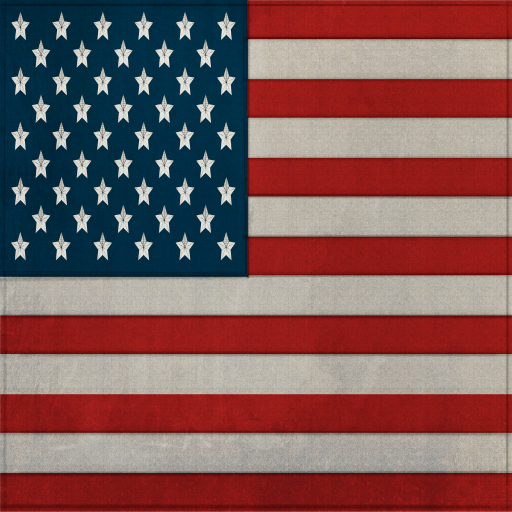 US |
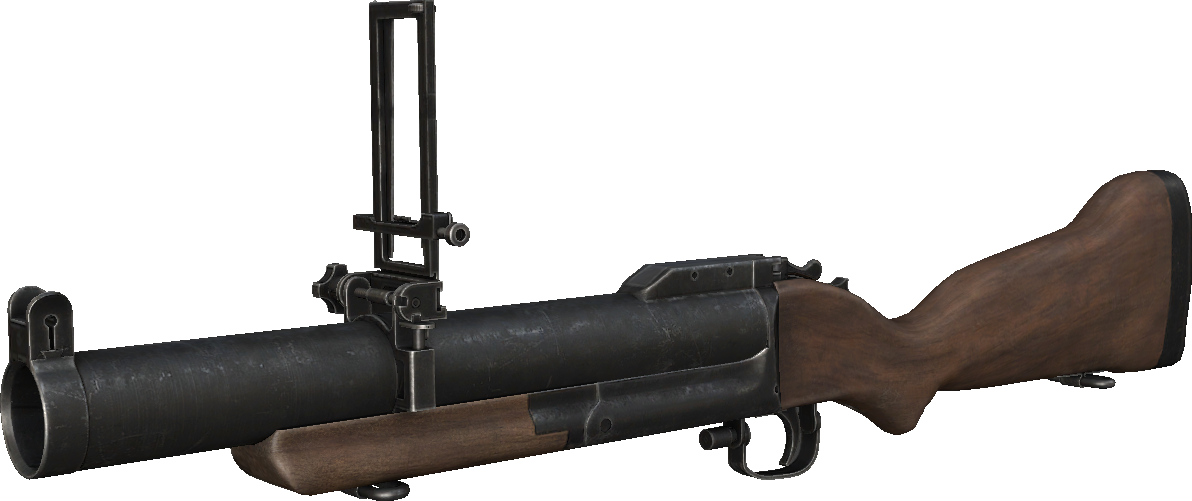 M79 |
 |
 Engineer Engineer |
1 / 2 | 125 | 200 |
| Designation | Weapon Type | Fire Modes | Fire Rate | Bullet Spread ° | Range Modifier | Muzzle Velocity | Projectile weight | Weight | Reload Speed |
|---|---|---|---|---|---|---|---|---|---|
| M79 | Grenade Launcher | Semi | 12 RPM | 3° & 1° ADS | Unaffected | 60 m/s | 230g (.5 lbs) | 7 kg (15.43 lbs) | 3.166 Seconds |
| Buckshot Damage Base | Headshot × | Chest × | Stomach × | Leg × | Arm × | Range Modifier |
|---|---|---|---|---|---|---|
| 25x6 | ×2.5 = 62.5 | ×1.5 = 37.5 | ×1.25 = 31.25 | ×0.9 = 22.5 | ×0.85 = 21.25 | 0.75 |
The M79 grenade launcher is a single-shot, shoulder-fired, break-action grenade launcher that fires a 40×46mm grenade, which uses what the US Army calls the High-Low Propulsion System to keep recoil forces low, and first appeared during the Vietnam War. Its distinctive report has earned it colorful nicknames, such as "Thumper", "Thump-Gun", "Bloop Tube", "Big Ed", "Elephant Gun", and "Blooper" among American soldiers as well as "Can Cannon" in reference to the grenade size; Australian units referred to it as the "Wombat Gun".
HISTORY
The M79 was a result of the US Army's Project Niblick, an attempt to increase firepower for the infantryman by having an explosive projectile more accurate with further range than rifle grenades, but more portable than a mortar. Project Niblick created the 40 x 46 mm grenade, but was unable to create a satisfactory launcher for it that could fire more than a single shot. One of the launchers at Springfield Armory was the three-shot "harmonica" T148 (not to be confused with the later, underbarrel XM148), which did see some limited production and fielding in Vietnam, but problems with the three-round magazine prevented widespread acceptance. The other design was a single-shot break-open, shoulder-fired weapon, the S-3. This was refined into the S-5, which resembled an oversized single-barrel shotgun. Unable to solve the problems with the multi-shot T148 launcher, the Army adopted the S-5 as the XM79. With a new sight, the XM79 was officially adopted as the M79 on December 15, 1960.
In 1961, the first M79 grenade launchers were delivered to the US Army. Owing to its ease of use, reliability, and firepower, the M79 became popular among American soldiers, who dubbed it "the platoon leader's artillery". Some soldiers would cut down the stock and barrel to make the M79 even more portable.
The M79 saw combat in the Vietnam War beginning in the early days, when M79 Grenadiers assigned to major Army divisions first arrived to see combat in Vietnam in 1965, including the 1st Cavalry Division, the 1st Infantry Division, the 101st Airborne Division, and the 173rd Airborne Brigade. M79s were assigned to the specialist 4 grenadier in both 4-5-man fire teams organic to an Army rifle squad headed by a squad leader. The Marines assigned one grenadier to their three-fireteam 14-man rifle squad.
However, its single-shot nature was a serious drawback. Reloading after every shot meant a slow rate of fire and an inability to keep up a constant volume of fire during a firefight. This led the Navy to develop the China Lake Grenade Launcher, which was produced for deployed SEAL Teams. For close-in situations, the minimum arming range (the round travels 30 meters to arm itself) and the blast radius meant a grenadier had to use his .45 ACP (11.43 mm) M1911 pistol. Special grenades for close-in fighting were created to compensate, though a soldier was not always able to load one in the heat of battle. Moreover, its size meant that a grenadier armed with the M79 could not carry a rifle, having only a sidearm to use in a firefight after expending his grenades, though some grenadiers opted to carry a slung M16 rifle in lieu of a sidearm.
SOURCE
